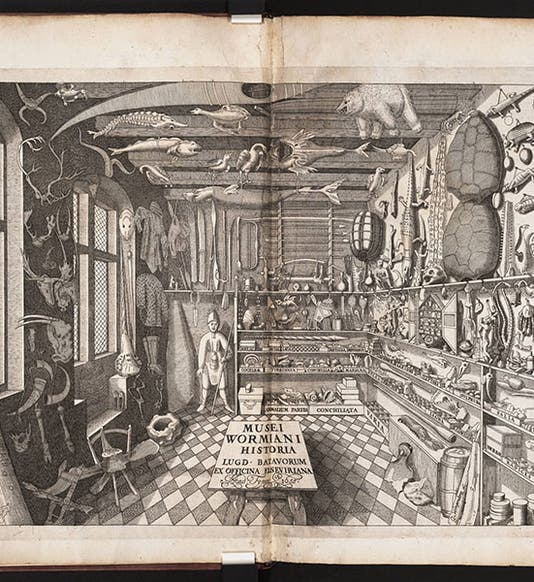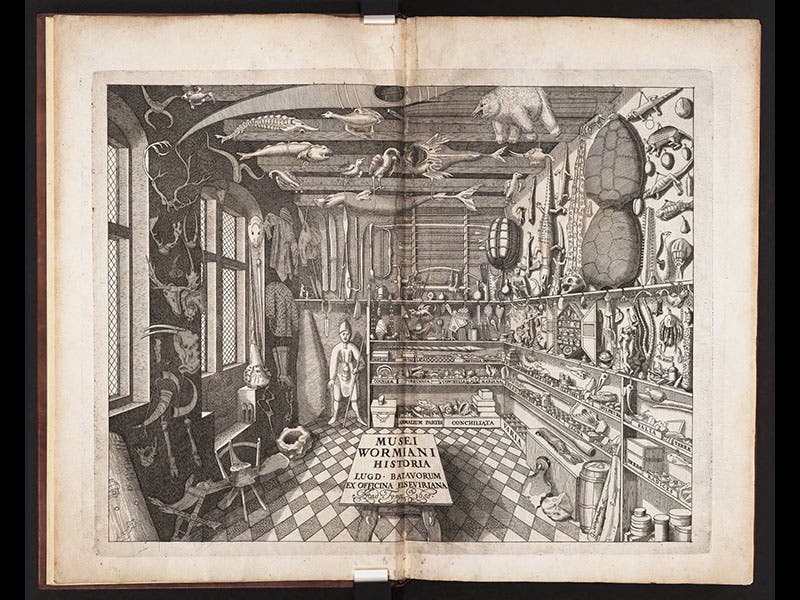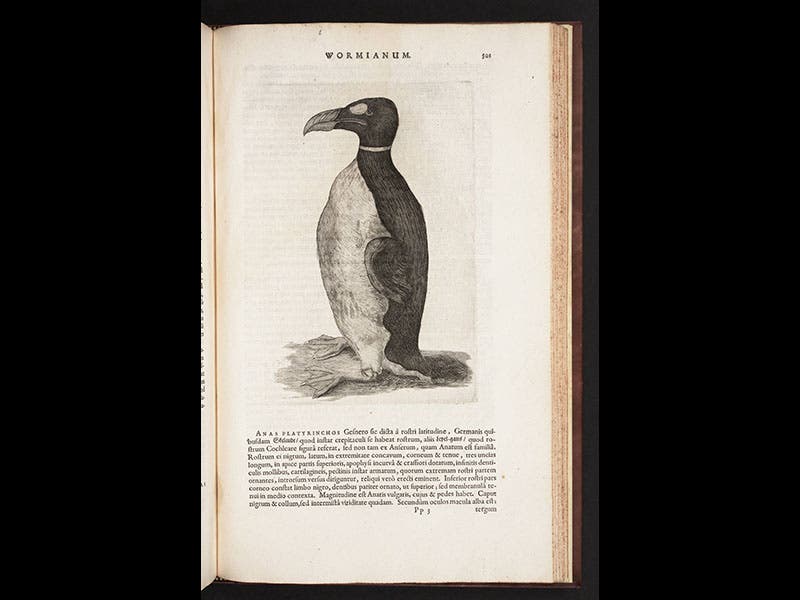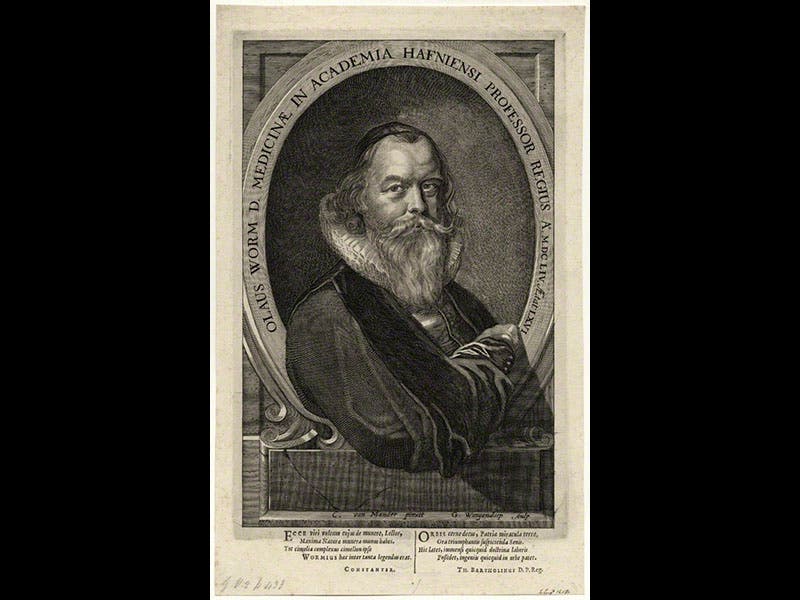Scientist of the Day - Ole Worm
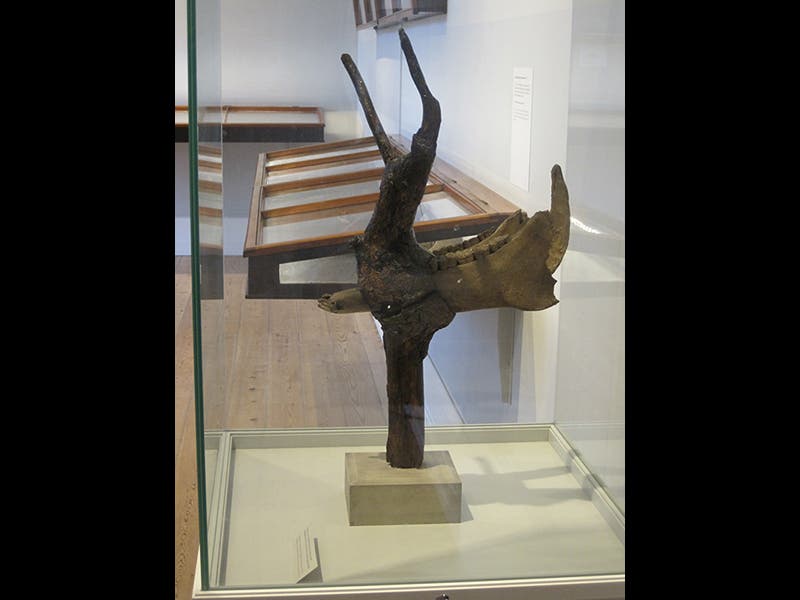
Ole Worm, a Danish physician and collector, was born May 13, 1588. Worm is best known for his Museum Wormianum, a cabinet of curiosities that he established in Copenhagen (and also the title of the posthumous book, 1655, that described and illustrated his collection). Wunderkammern (wonder-rooms) were not unusual in early modern Europe, although they tended to be assembled by rulers, noblemen or wealthy burgers, and they were usually lavishly exotic, filled with rare shells and minerals and elaborately-crafted pieces of metalwork. Worm’s museum was different, for he liked ordinary objects that related to Scandinavia, whether natural or artificial, with only the occasional exotic specimen added in. HIs book opens with an engraving of his museum—probably the most famous museum illustration of the Baroque era (first image above). You can see skis, harpoons, a stool fashioned from a whale vertebra, a kayak, and even a polar bear hanging from the ceiling. In the left corner, leaning against the wall in the window niche, there is a skull with a long horn or tusk attached. Worm was very proud of this, for he was one of the first to demonstrate (with this very skull) that the so-called unicorn horn was not the horn of a horse-like quadruped at all, but was rather the tusk of an Arctic whale.
Worm’s museum marked a pivotal point in the history of collecting, as museums evolved from treasure-troves of individual and unrelated exotica to thematic collections of ordinary objects that simply moved nature indoors. It is notable that his most exotic specimen was in fact quite ordinary, if rare: a horse jaw, imprisoned in a small tree trunk that had grown around it. You can see it on the top shelf, in the center of the engraving, slightly to the left of the fold. This specimen is the only one of all the objects collected by Worm that still survives; you may see it today in the Natural History Museum of Denmark in Copenhagen (second image).
Worm’s book also contains engravings of two of his pets, a Great Auk (third image) and what he thinks is a coati, but is actually a raccoon (fourth image). There is a handsome engraved frontispiece portrait of Worm in his book, so well done that you can also find this print in the National Portrait Gallery in London (fifth image).
Dr. William B. Ashworth, Jr., Consultant for the History of Science, Linda Hall Library and Associate Professor, Department of History, University of Missouri-Kansas City. Comments or corrections are welcome; please direct to ashworthw@umkc.edu.

